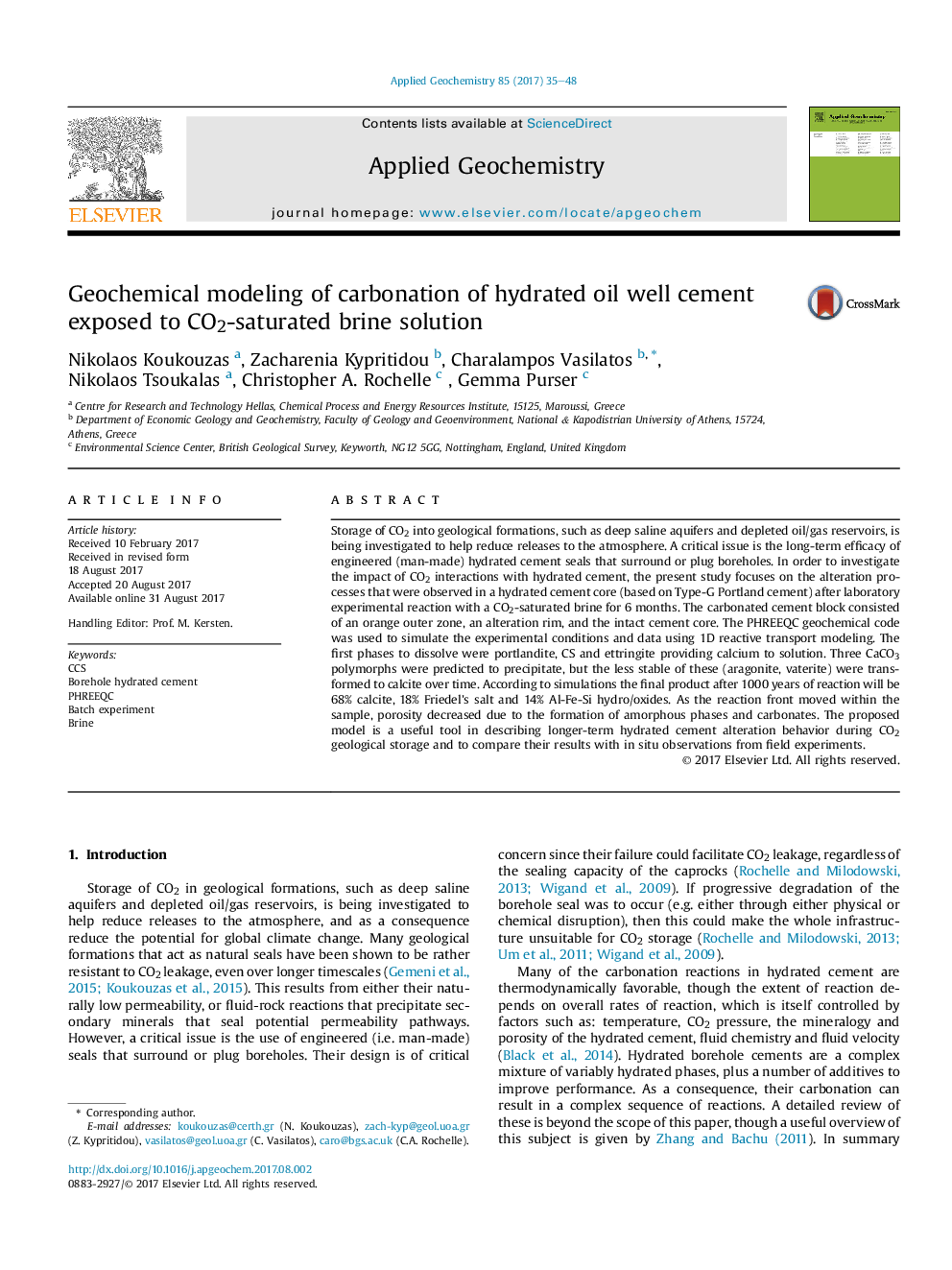| کد مقاله | کد نشریه | سال انتشار | مقاله انگلیسی | نسخه تمام متن |
|---|---|---|---|---|
| 5752443 | 1412528 | 2017 | 14 صفحه PDF | دانلود رایگان |

- The cement-CO2-brine reactions were investigated using laboratory experiments and PHREEQC geochemical code.
- The main reaction experimentally observed was carbonation of the cement.
- The reacted cement block consisted of an outer porous rim, an intermediate amorphous zone and the unaltered core.
- Calcium enrichment observed due to portlandite, wollastonite and ettringitte dissolution.
- The clinker dissolution releases Al, Fe and Si in the brine that form oxide precipitants, and Friedel's salt.
Storage of CO2 into geological formations, such as deep saline aquifers and depleted oil/gas reservoirs, is being investigated to help reduce releases to the atmosphere. A critical issue is the long-term efficacy of engineered (man-made) hydrated cement seals that surround or plug boreholes. In order to investigate the impact of CO2 interactions with hydrated cement, the present study focuses on the alteration processes that were observed in a hydrated cement core (based on Type-G Portland cement) after laboratory experimental reaction with a CO2-saturated brine for 6 months. The carbonated cement block consisted of an orange outer zone, an alteration rim, and the intact cement core. The PHREEQC geochemical code was used to simulate the experimental conditions and data using 1D reactive transport modeling. The first phases to dissolve were portlandite, CS and ettringite providing calcium to solution. Three CaCO3 polymorphs were predicted to precipitate, but the less stable of these (aragonite, vaterite) were transformed to calcite over time. According to simulations the final product after 1000 years of reaction will be 68% calcite, 18% Friedel's salt and 14% Al-Fe-Si hydro/oxides. As the reaction front moved within the sample, porosity decreased due to the formation of amorphous phases and carbonates. The proposed model is a useful tool in describing longer-term hydrated cement alteration behavior during CO2 geological storage and to compare their results with in situ observations from field experiments.
Journal: Applied Geochemistry - Volume 85, Part A, October 2017, Pages 35-48